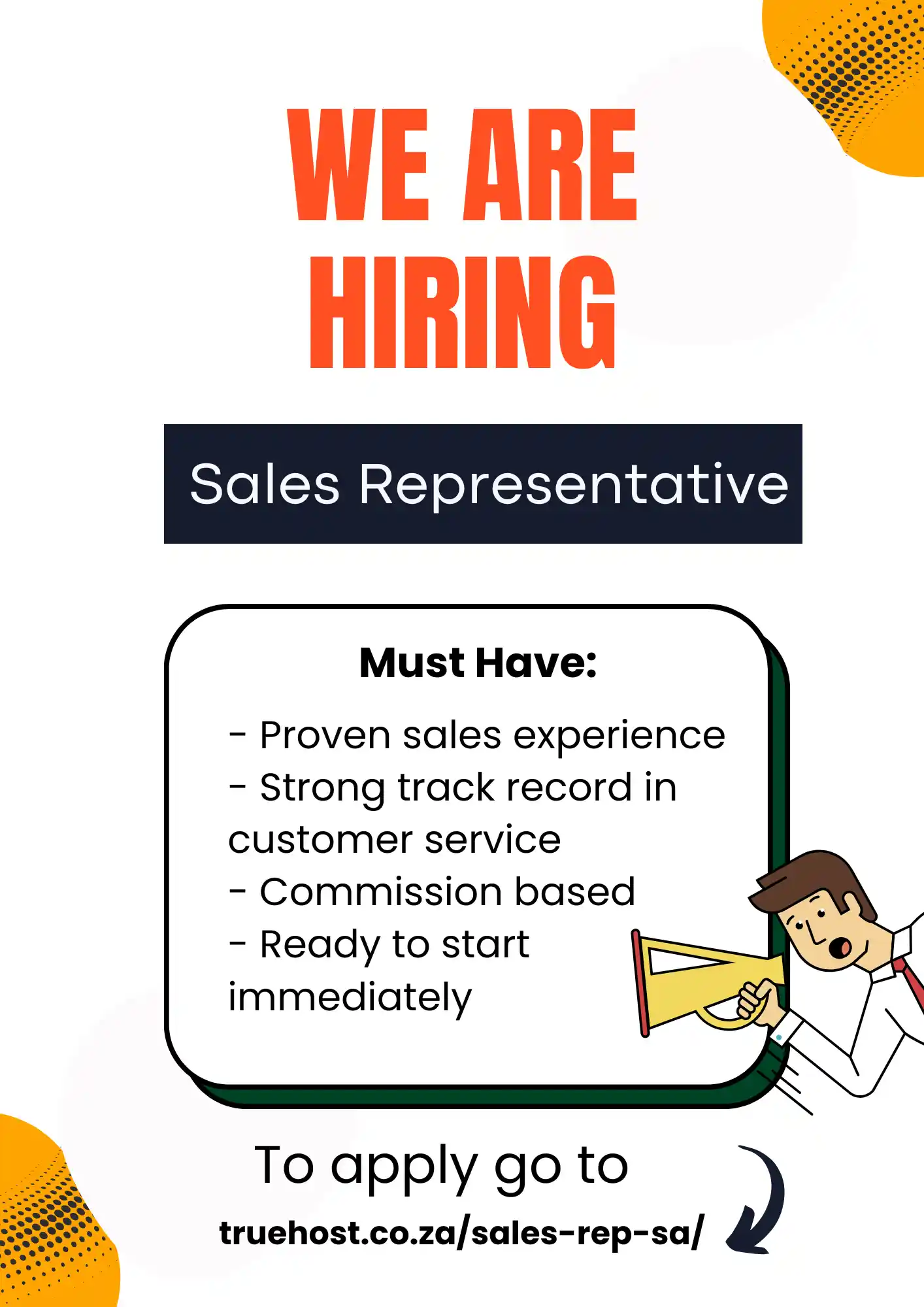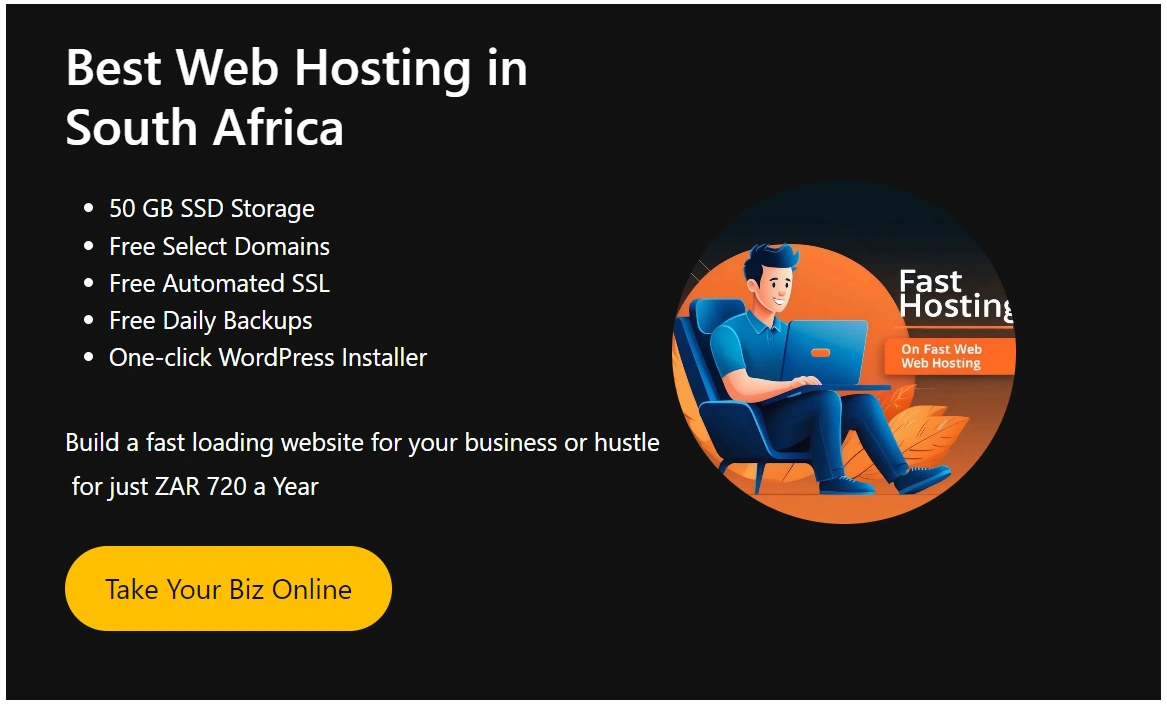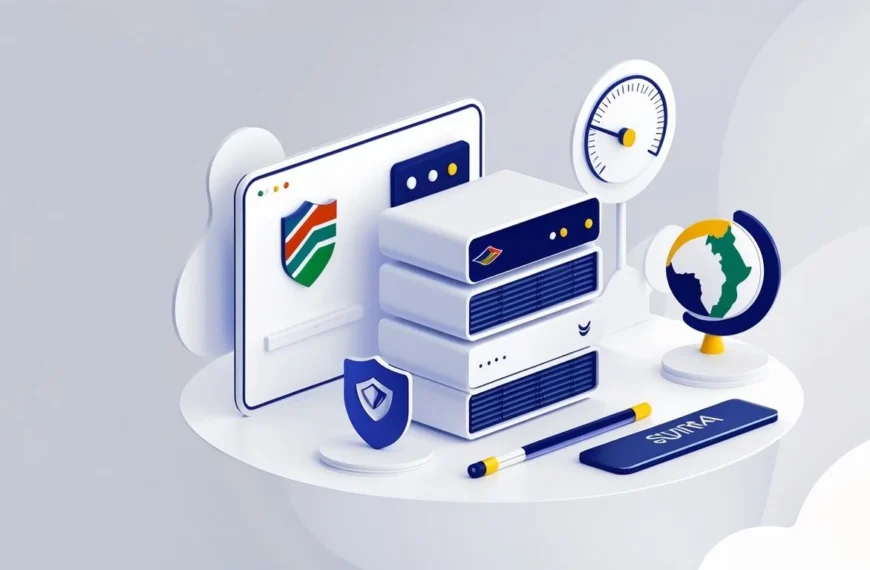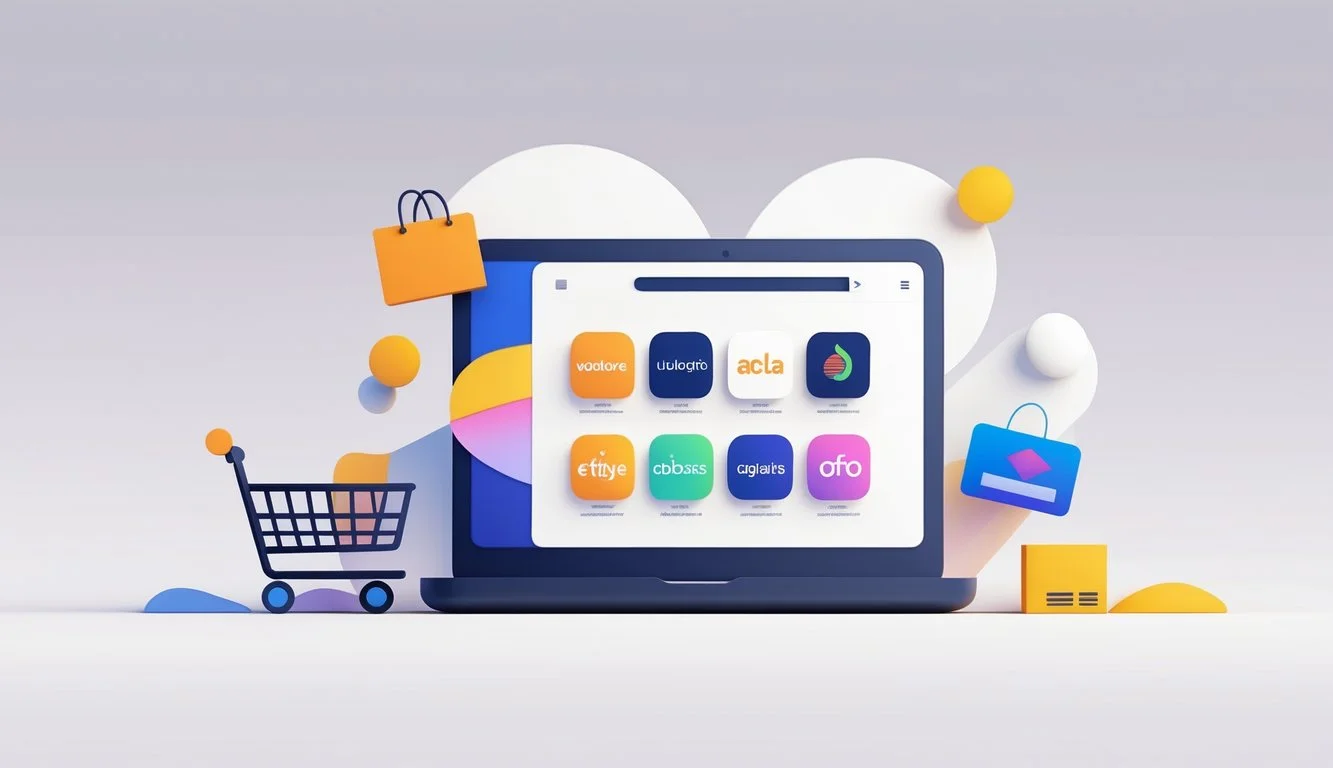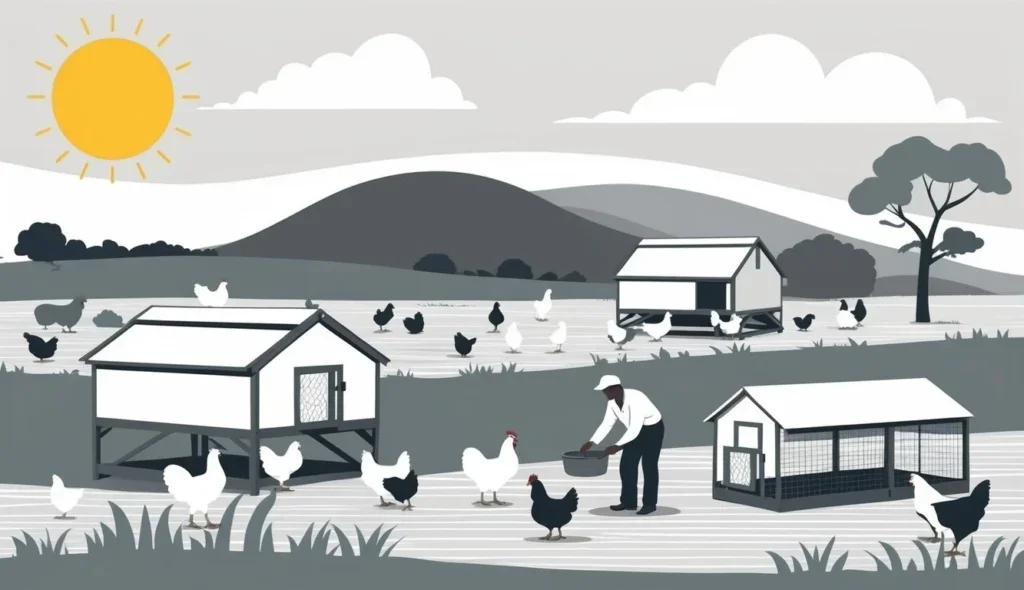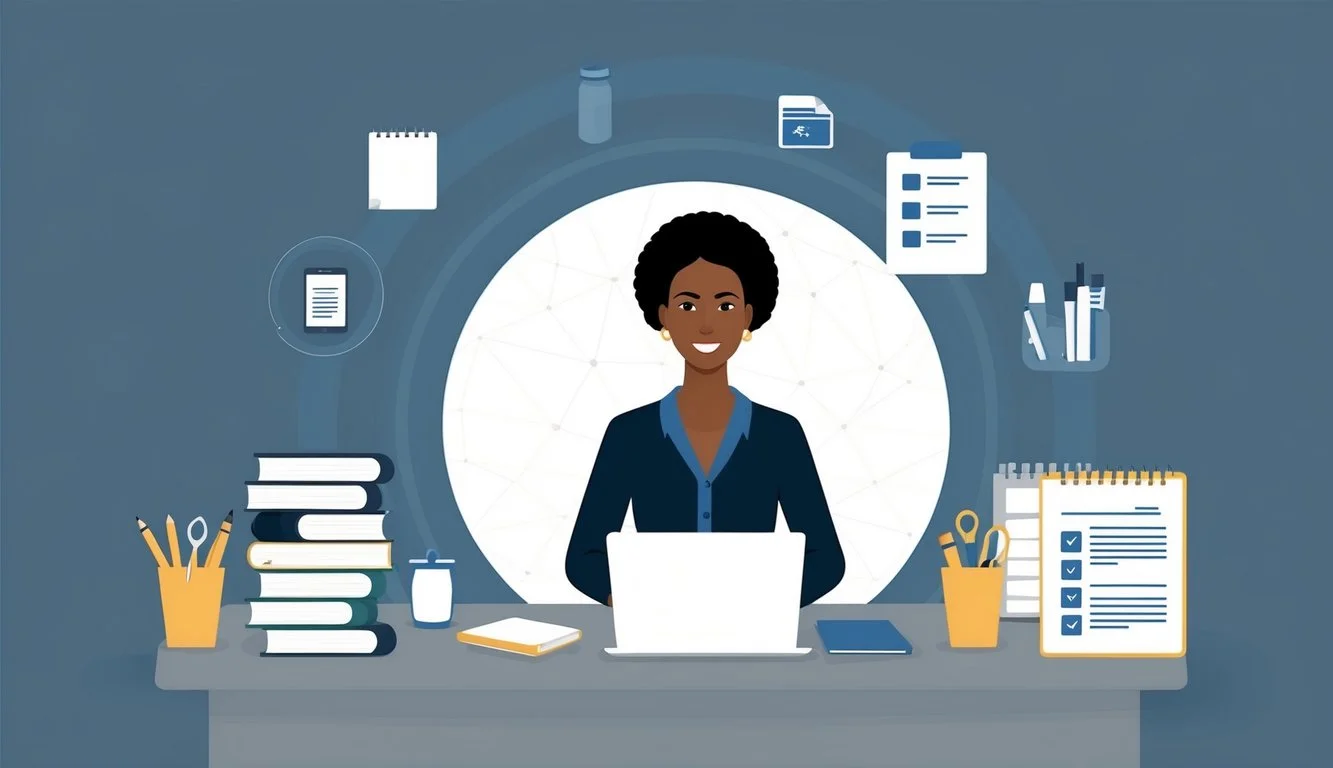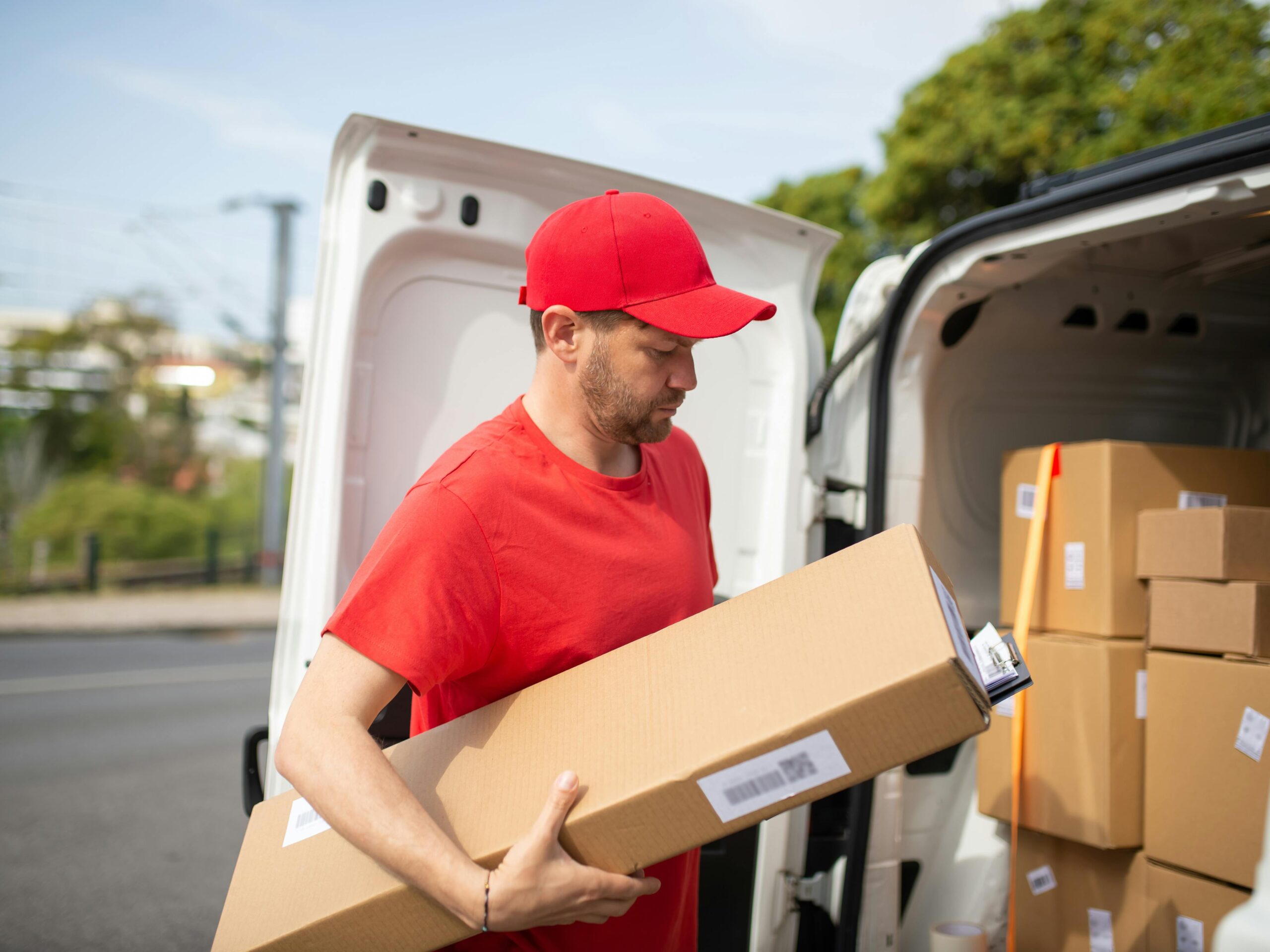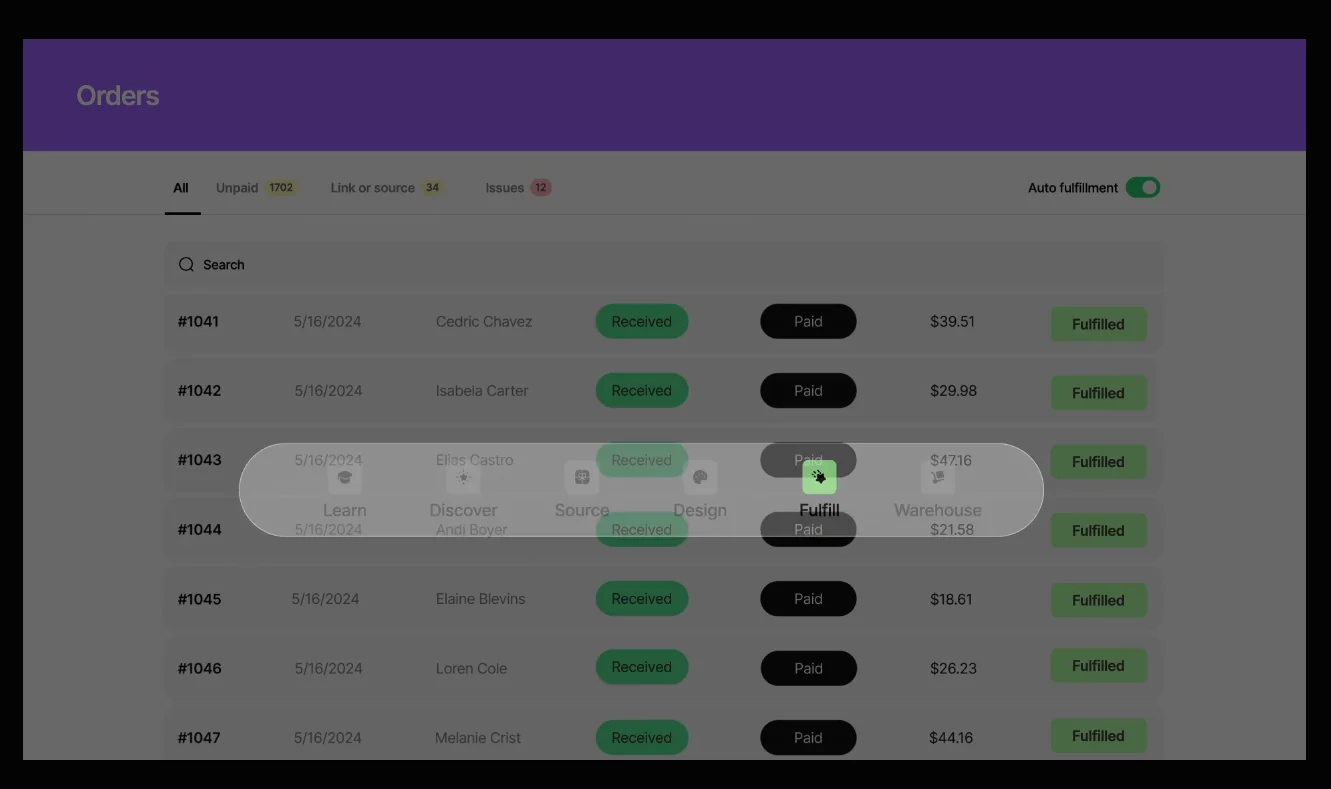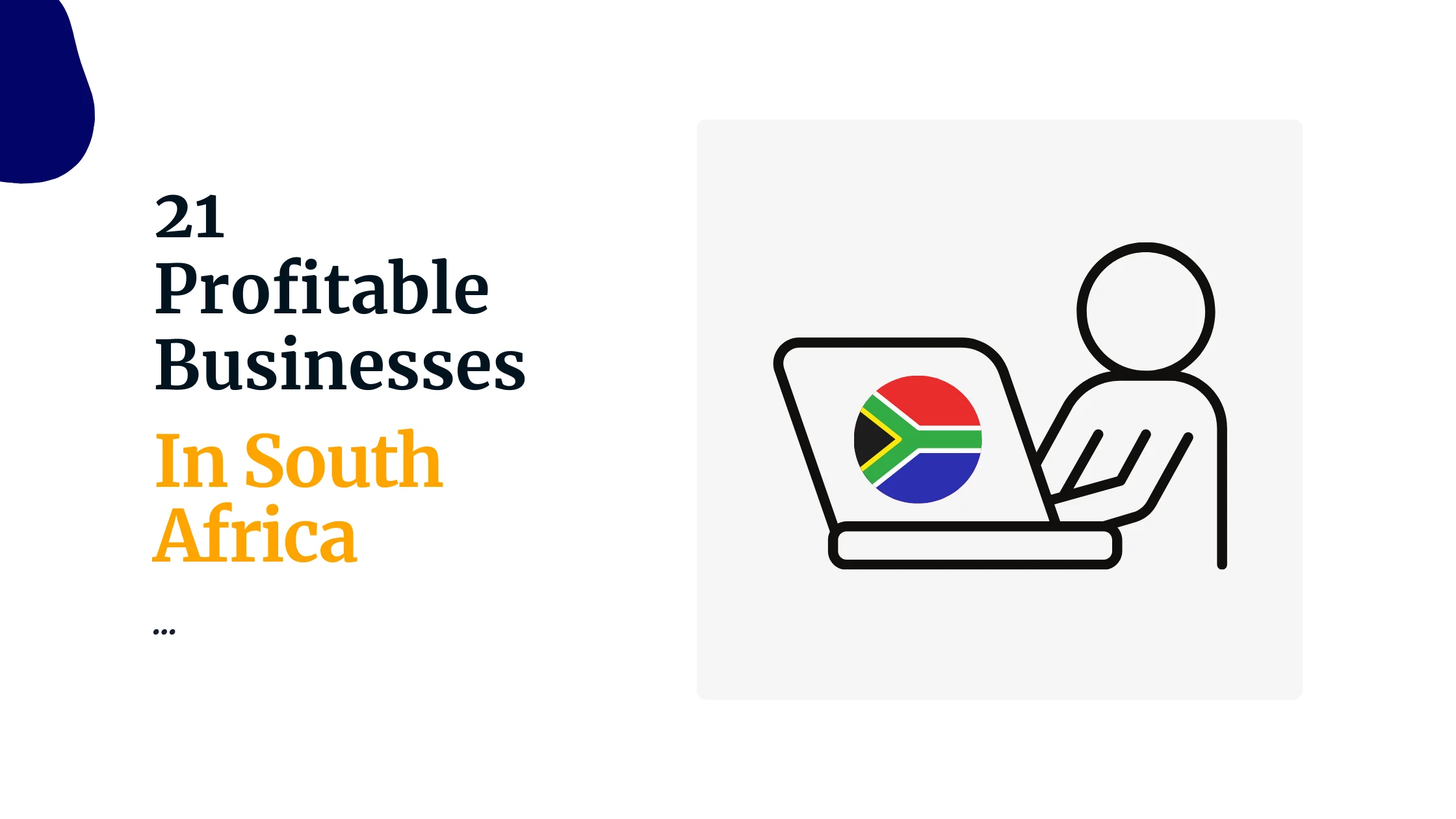In this blog post, you will find 11 best practices for building a WordPress site in South Africa.
See, WordPress has become one of the most popular (powering over 45% of the entire internet) and powerful content management systems in the world today.
Why?
One, it provides an easy-to-use platform for creating websites and blogs.
This means that you can quickly develop a professional web presence with minimal technical knowledge.
In South Africa, over 70% of people shop online, so you can’t no longer ignore having a website.
That’s where WordPress comes in handy.
In our previous article: How to Build a Website on WordPress in South Africa: A Step-by-Step Guide, we dived deep into exactly how to create your site.
If you haven’t read it, go ahead and return to this guide.
Now, this article will cover the best practices for getting the best website possible.
Table of Contents
1. Plan Your Site Structure
a. Choose a Theme that Fits Your Needs
One of the most important steps in building a WordPress site is choosing the right theme.
Your theme should match both your website’s purpose and its aesthetic. It should also be optimized for desktop, mobile, and tablet devices.
Consider factors such as page loading speed, the responsiveness on different screen sizes, device compatibility, search engine optimization (SEO), and ease of customization when looking into themes.
For instance, if you are creating an online store with WooCommerce, you may choose a theme specifically designed for e-commerce sites.
On the other hand, if you are designing a portfolio website showcasing your work on photography or art subjects, select one that provides a grid layout for images or video content rather than traditional blog post formats.
b. Create a Sitemap
A sitemap is essentially a list of all the content on your website, which search engine crawlers can use to find and index all the pages on your website easily.
It also helps visitors quickly find what they’re looking for without guessing or typing in URLs.
You can use plugins like Yoast SEO or Google XML Sitemaps to create a sitemap for your WordPress site.
Both plugins will automatically generate an XML sitemap based on your posts and pages, making it easier for search engines to crawl and index them.
c. Organize Content into Categories and Pages
Organizing content into categories and pages is an important step for any website, especially a WordPress site.
This can help users easily find the information they are searching for; it also ensures that pages on the site have their own unique hierarchy.
Do this with SEO in mind.
- Log in to your WordPress site’s dashboard.
- Click on “Posts” or “Media” in the left-hand menu, depending on what type of content you want to categorize.
- Click on “Categories” in the left-hand menu. This will take you to the Categories page.
- Type in the name of the category you want to create in the “Name” field.
- Optionally, you can add a slug, which is a URL-friendly version of the category name. WordPress will automatically generate a slug based on the name you entered, but you can edit it if you want.
- You can also choose a parent category if you want to create a subcategory. For example, if you want to create a “Vegetables” subcategory under the “Food” category, you would select “Food” as the parent category.
- Optionally, you can add a description for the category, which will appear on the category archive page.
- Click the “Add New Category” button to create the category.
Once you’ve created your categories, you can assign them to your posts or media by selecting the appropriate category from the “Categories” box on the post or media edit screen.
2. Choose an Appropriate Hosting Plan
Your WordPress website in South Africa is as good as your hosting account.
It’s sad, but that’s just how things are.
So, before you pull the trigger, do the following?.
a. Consider Cost, Reliability, and Security
To get the most out of your budget, shop around and compare prices between different web hosting providers in South Africa.
While cost-effective plans may seem attractive, ensure that they offer reliable performance and security.
A reliable website host will provide consistent uptime with minimal interruptions, while also providing superior customer support if needed.
On top of that is security.
And there’s no shortcut to this; any data stored on the website must be protected from potential hackers or malicious software.
Look for hosting plans that include up-to-date security measures such as firewalls, encryption, and regular backups to safeguard your data and keep your site running smoothly.
So, if you are shopping, kindly check out our cheapest web hosting plans in South Africa.
b. Research Local WordPress Hosting Providers
Using local hosts offers several perks, including more reliable speeds and better support services since they are familiar with the local market.
So, when researching potential hosts, be sure to give priority to local web hosts like Truehost.co.za.
We have a host of local servers, which means you can opt to host your site locally.
Doing this comes with a ton of benefits including faster page load speeds, which in turn can boost your search rankings.
3. Pick the Right Theme
This should have been in the top among what to do when planning the structure of your WordPress website in South Africa.
There are thousands of themes available for WordPress users, ranging from minimalist designs to highly complex and feature-packed options.
And that’s why it’s important to select a theme that reflects the brand image you want to create and also provides an excellent user experience.
So, when hunting, look for one that is optimized for mobile devices and offers plenty of customization options so you can make it your own.
Remember, your site will attract more than 50% of mobile users.
And you’d hate it if you frustrate them!
Themes should be responsive, adapting to different screen sizes and displaying correctly on all devices.
They should also be aesthetically pleasing while still providing all the features and functionality visitors need.
To keep your site safe, choose themes regularly updated with bug fixes and security patches so you can keep your site safe from malicious attacks.
4. Optimize Your Site for Better Performance
a. Select an Appropriate Web Server
Web servers are responsible for hosting websites and ensuring users can access them.
A good web server should have high performance and reliability, as well as the flexibility to scale up or down with changes in traffic levels.
One of the most popular web server options for businesses in South Africa is Apache.
This open-source web server is widely used across the world, offering great security features and excellent support for PHP applications like WordPress.
Other reliable options include Nginx and Microsoft IIS, which perform well on Windows systems.
It’s also worth considering a cloud hosting option such asCloudPap or Amazon Web Services (AWS), which offers powerful servers that are located geographically close to your target market so that page loading times remain low.
You can ask your web host to recommend the best web server for your needs.
b. Optimize Images and Videos
According to Potent (2019), website conversion rates drop by an average of 4.42% with each additional second of load time (between seconds 0-5)!
Optimizing these elements ensures that your website loads quickly, looks great on all devices, and performs optimally for visitors.
First, consider image size when uploading photos or other images.
You should always save images in the smallest file size possible while maintaining quality; this will improve page loading times and reduce bandwidth usage.
When it comes to videos, compressing them with an appropriate format can help reduce their overall file size without compromising quality.
Alternatively, upload the videos to a central place like YouTube, copy the link and embed on your pages.
Adding subtitles to videos can make them accessible to more viewers within South Africa who may not understand the language used in the video’s audio track.
c. Utilize Caching
Caching allows the website to store certain pieces of data so that the next time a user visits, they do not need to wait for each page or image to load from scratch.
This leads to faster loading times and improved performance.
There are several options when it comes to caching; one being browser caching which stores static files on the user’s device, allowing them access without having to re-fetch them from the server every time they visit.
Another option is page caching which stores HTML pages on the server so it can be served faster when requested by users.
Finally, Object Cache caches database queries in memory for a quicker response instead of hitting the database each time it needs information.
d. Enable Gzip Compression
Enabling Gzip Compression is a great way to reduce the size of files being sent between the server and browser, resulting in faster loading times.
BETTER part?
This helps with SEO by improving page speed which is one of Google’s ranking factors.
To enable Gzip compression on a WordPress website in South Africa, users can either use an online tool or manually configure it via their .htaccess file.
Here’s the following code snippet:
<IfModule mod_deflate.c>
# Compress HTML, CSS, JavaScript, Text, XML and fonts
AddOutputFilterByType DEFLATE application/javascript
AddOutputFilterByType DEFLATE application/rss+xml
AddOutputFilterByType DEFLATE application/vnd.ms-fontobject
AddOutputFilterByType DEFLATE application/x-font
AddOutputFilterByType DEFLATE application/x-font-opentype
AddOutputFilterByType DEFLATE application/x-font-otf
AddOutputFilterByType DEFLATE application/x-font-truetype
AddOutputFilterByType DEFLATE application/x-font-ttf
AddOutputFilterByType DEFLATE application/x-javascript
AddOutputFilterByType DEFLATE application/xhtml+xml
AddOutputFilterByType DEFLATE application/xml
AddOutputFilterByType DEFLATE font/opentype
AddOutputFilterByType DEFLATE font/otf
AddOutputFilterByType DEFLATE font/ttf
AddOutputFilterByType DEFLATE image/svg+xml
AddOutputFilterByType DEFLATE image/x-icon
AddOutputFilterByType DEFLATE text/css
AddOutputFilterByType DEFLATE text/html
AddOutputFilterByType DEFLATE text/javascript
AddOutputFilterByType DEFLATE text/plain
AddOutputFilterByType DEFLATE text/xml
# Remove browser bugs (only needed for really old browsers)
BrowserMatch ^Mozilla/4 gzip-only-text/html
BrowserMatch ^Mozilla/4\.0[678] no-gzip
BrowserMatch \bMSIE !no-gzip !gzip-only-text/html
Header append Vary User-Agent
</IfModule>
Copy and paste this code into your .htaccess file in the root directory of your WordPress site.
This should enable gzip compression for the specified file types, which can help improve the speed and performance of your site.
5. Secure Your Website
WordPress is the most targeted CMS in the world!
There are close to 90,000 attacks per minute.
And guess what?
8% of WordPress sites are hacked due to weak passwords?.
a. Choose Strong Passwords
And that’s why one of the most important practices for building a secure WordPress site in South Africa is to choose strong passwords.
Passwords should be at least 8 characters long and contain letters, numbers, and special characters.
It is also recommended to avoid using common words or phrases, as hackers can easily guess these.
Most importantly, DO NOT use the same password for multiple accounts or sites as this makes it easier for your data to become compromised.
Furthermore, users (if you have multiple roles on your WP site) should consider changing their passwords on a regular basis in order to keep them secure.
Finally, it is recommended that all passwords are stored securely either through an encryption method or with a reliable third-party password manager.
Such tools include LastPass, which is secure and even helps scan the web for any leaked data.
b. Use SSL/TLS Certificates
Besides the passwords, SSL/TLS certificates are an important element of website security.
They help to protect sensitive data, such as credit card numbers and passwords, from being intercepted by malicious third parties.
Not to mention, using an SSL certificate will improve your search engine rankings.
How?
Well, Google’s algorithms prioritize sites with a secure connection over those without one.
Make sure that you only purchase certificates from a reliable provider such as Comodo or Let’s Encrypt so that you are sure it is legitimate.
Talking of Let’s Encrypt, here are the exact steps to install it into your domain on cPanel:
- Log in to your cPanel account.
- Click on the “Let’s Encrypt SSL” icon under the “Security” section.
- Select the domain name you want to install the SSL certificate for.
- Choose the type of SSL certificate you want to install. You can select “SSL (HTTPS)” or “Wildcard SSL” depending on your needs.
- Select the “Include a ‘www’ for the selected domain” checkbox if you want to secure both your domain and its “www” subdomain.
- Click the “ISSUE” button.
- Wait for the installation process to complete. This may take a few minutes.
- Once the installation is complete, you should see a success message.
c. Configure Security Settings
As if that’s not enough, WordPress offers a range of built-in security features that can help keep your site secure.
These include two-factor authentication for added protection and automatic updates so you don’t have to worry about manually updating your software.
You can also install plugins such as WordFence or iThemes Security Pro to add an extra layer of protection and help detect potential threats before they become an issue.
6. Take Advantage of Plugins
Every WordPress site needs essential plugins to ensure its success.
Plugins are add-ons that add functionalities to your site.
WordPress is not perfect out of the box. It lacks this and that, but plugins can fill these gaps.
One of the most important plugins for a South African WordPress site is an SEO plugin such as Yoast or All in One SEO Pack.
These plugins help optimize your content for maximum search engine visibility, so you can get more traffic from local searches.
Other must-have plugins include security measures, spam protection, and analytics trackers such as Google Analytics.
For spam protection, go with Akismet; for security, pick WordFence.
There are also specific WordPress plugins for more specialized features like e-commerce or membership sites.
Make sure you do your research before installing any plugin in order to find out which ones are compatible with your version of WordPress and have good ratings from other users.
7. Choose the Right Domain Name
Choosing the right domain name for your WordPress site is essential for creating a successful online presence.
To get it right the first time, follow these two key best practices:
Ensure that the domain name is relevant to your site.
It should include words that accurately reflect what content users can expect to find on the website.
This will help with SEO rankings and make it easier for visitors to remember your domain name.
For example, consider including ‘jewelry’ or ‘handmade’ in the domain name if you are selling handmade jewelry.
Consider using a .co.za country code top-level domain (ccTLD).
This will help build trust, as it shows you are a South African company or business.
It also makes it clear that your site is local and accessible to South African users.
You can register a .co.za domain name directly with us.
8. Create Content with SEO in Mind
Traffic is the lifeblood of any website.
Without it, you have a ghost town?!
What’s the solution?
As you design your WordPress website in South Africa, keep SEO in mind!
a. Research Relevant Keywords
It is essential to identify what terms your target audience may be searching for and use those words in your website content.
To start, brainstorm a list of related words and phrases that are relevant to your site’s content.
Afterward, you can use keyword research tools such as Google Keyword Planner or Moz’s Keyword Explorer to refine your list and find more specific keywords.
When researching keyword ideas, consider the search intent behind each keyword phrase – are people searching for information, products, or services?
Pay attention to how competitive a given keyword is – if it has high competition you may need to invest in SEO efforts or utilize long-tail keywords with lower competition instead.
b. Optimize Page Titles and Meta Descriptions
This is what I was talking about earlier.
Page titles and meta descriptions are essential for SEO.
Optimized page titles should include the brand name, primary keyword, and even geographic location to help with local SEO.
Meta descriptions should be concise and descriptive, providing potential visitors with an accurate summary of what they will find on the page.
Make sure that all page titles and meta descriptions are unique – do not use the same text for more than one page as this can hurt your website’s ranking in search engine results pages (SERPs).
And avoid generic phrases like “homepage” or “about us” for your titles as these can appear sloppy to users.
Finally, if possible include a call-to-action phrase at the end of your title or meta description to encourage a higher click-through rate.
9. Reach Out to Your Audience
How?
How about you start with social media?
Platforms such as Facebook, Twitter, and Instagram can help you to reach a wider audience and promote your business.
Interestingly, the number of active social media users in South Africa grew almost three-fold in the last eight years, reaching 28 million in 2022.
You should also use these channels to engage with customers, share updates about products or services, answer questions, and provide customer support.
While at it, monitor your site’s performance so you can understand how users interact with it.
This can be done by using tools such as Google Analytics, which will allow you to track page views, visitor sources, and other activity on your website.
With this information at hand, you will be able to identify areas where improvements need to be made in order for users to have the best experience when visiting your website.
10. Monitor Your WordPress Site for Updates
As we mentioned earlier, WordPress tops the list of the most attached CMSes!
And one of the top reasons sites get hacked is using outdated software, which in your case, includes plugins and themes.
Regularly monitoring and updating your plugins and themes helps ensure your website’s security, performance, compatibility, and stability.
Don’t stop there.
Monitor for any potential security vulnerabilities as these can lead to costly downtime or data loss.
To begin, review the list of active plugins on the dashboard once logged in.
Checking whether any available plugin updates or new versions are being released will help you stay one step ahead of any potential issues.
And you can always turn on ‘auto-updates’ for both WordPress core itself, plugins, and of course, the themes.
Keep an eye on the official WordPress blog so that you’re aware of any changes in functionality and upcoming releases that could affect your site’s performance.
11. Back Up Your WordPress Site
But what if you do all things right and still got hit?
How will you get back on your feet?
Backing up your WordPress site regularly will help you to recover from any possible data loss, errors, or malicious attacks.
Creating regular backups is simple with a variety of backup plugins available in the WordPress repository.
These plugins allow you to schedule automatic backups at intervals of your choice and save them on your local computer or other storage devices.
However, consider storing these backup files remotely.
This means that even if there is an issue with the server hosting your website, the backup files will still remain intact as they are stored offsite on another server.
There are many services that offer remote cloud storage for backing up WordPress websites, which provides an extra layer of security for keeping important data safe and accessible at all times.
Final Thoughts
The process of building a WordPress site in South Africa can be challenging.
But following the best practices outlined in this article can help create a successful, secure, and user-friendly website.
Keep these best practices in mind when setting up your WordPress site and completing the development process.
Remember to take advantage of any available resources, such as tutorials or forums that provide helpful information on maintaining and troubleshooting problems with WordPress sites.
 Web Hosting
Web Hosting Windows HostingBuilt for Windows apps and websites – stability, speed and flexibility
Windows HostingBuilt for Windows apps and websites – stability, speed and flexibility Reseller HostingLaunch a hosting business without technical skills or expensive infrastructure
Reseller HostingLaunch a hosting business without technical skills or expensive infrastructure Affiliate ProgramRefer customers and earn commissions from sales across our platform
Affiliate ProgramRefer customers and earn commissions from sales across our platform Domain SearchFind and secure a domain name in seconds with our quick lookup tool
Domain SearchFind and secure a domain name in seconds with our quick lookup tool CO ZA Domains
CO ZA Domains All DomainsExplore domain names from over 324 TLDs globally – all in one place
All DomainsExplore domain names from over 324 TLDs globally – all in one place Whois
Whois VPS
VPS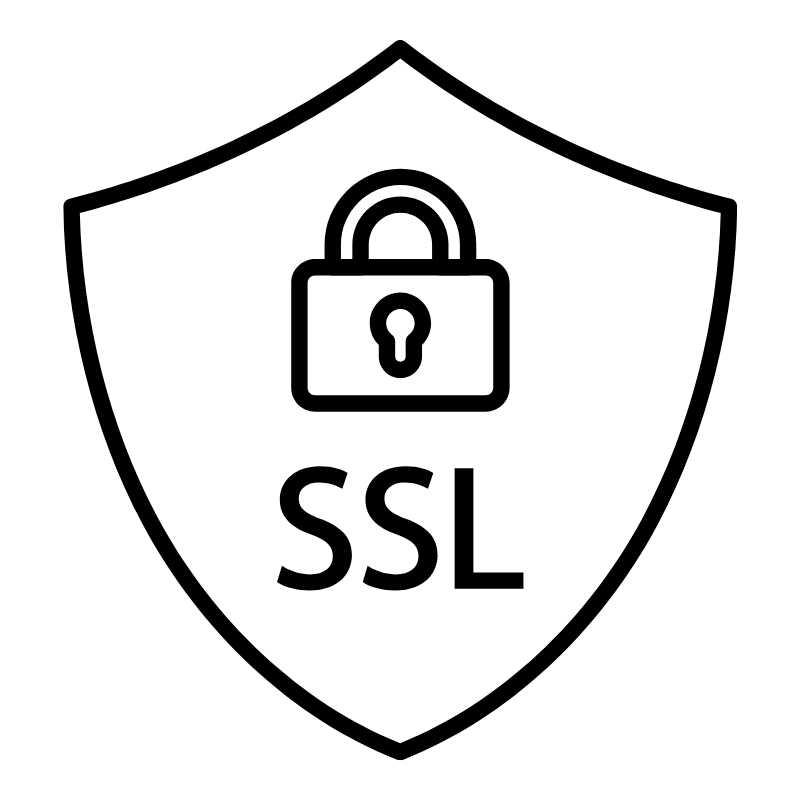 SSLs
SSLs